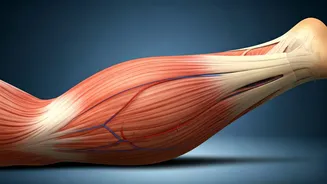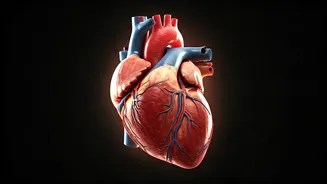Calf Muscle's Power
The calf muscle group, comprising the gastrocnemius and soleus, serves as a pivotal mechanism for circulation, earning the moniker of the 'second heart'.
Its function mirrors the heart's pumping action, facilitating the return of blood to the heart. When you walk or engage in any movement, the calf muscles contract, squeezing the veins in the lower legs and propelling blood upwards. This action effectively counteracts gravity, ensuring blood doesn't pool in the feet and legs. This is particularly crucial for individuals who spend extended periods standing or sitting, as weakened calf muscles can lead to poor circulation, causing discomfort, swelling, and an increased risk of blood clots. Maintaining strong calf muscles is, therefore, essential for overall cardiovascular health and efficient blood flow throughout the body. Without robust calf muscles, the body struggles to maintain efficient blood circulation, impacting overall wellness.
Strengthening Your Calves
There are several accessible ways to bolster the strength of your calf muscles, promoting better circulation and overall health. One effective exercise involves simple calf raises. Stand with your feet flat on the ground and lift up onto your toes, then slowly lower back down. This can be done anywhere, anytime, making it a convenient option. Another beneficial exercise is walking, particularly walking at a brisk pace or uphill. The increased effort engages the calf muscles more intensely, contributing to their strengthening. Incorporating regular stretching, such as holding a calf stretch by leaning against a wall with one leg back, further enhances flexibility and function. Moreover, engaging in exercises like jumping jacks, which involve repetitive calf muscle contractions, can add variety and further stimulate the muscles. For those seeking more intense workouts, cycling and swimming offer low-impact yet effective ways to strengthen these vital muscles, ensuring they remain robust and efficiently support circulation.
Importance of Movement
Regular movement is critical for maintaining healthy calf muscles and enhancing blood circulation. Prolonged periods of inactivity, such as sitting for extended durations, can hinder blood flow and weaken the calf muscles. Incorporating short, frequent breaks to walk around or stretch your legs can counteract these effects. Even a few minutes of activity every hour can make a significant difference. Staying active also contributes to a healthier lifestyle overall, reducing the risk of numerous health complications. For those with desk jobs, setting a timer to remind them to get up and move can be particularly beneficial. Integrating physical activity into daily routines, whether through brisk walks, climbing stairs, or simply standing up while on the phone, helps keep the calf muscles engaged and active. The more consistently one moves, the better the circulation becomes, ultimately supporting a healthier body and overall well-being. Prioritizing movement, therefore, is an investment in both muscle health and long-term circulatory function.
Diet and Hydration
Proper nutrition and adequate hydration are fundamental for optimal circulation and calf muscle health. A balanced diet rich in essential nutrients supports muscle function and overall cardiovascular health. Foods high in potassium, such as bananas and sweet potatoes, can help regulate blood pressure and promote better circulation. Staying well-hydrated is also crucial, as water aids in blood flow and prevents the blood from becoming thick and difficult to pump. Dehydration can lead to reduced blood volume, increasing the strain on the circulatory system and impairing calf muscle efficiency. Limiting processed foods, which often contain high levels of sodium, can help control blood pressure. Additionally, consuming foods rich in antioxidants, like berries and leafy greens, can protect blood vessels from damage and enhance overall circulatory health. Dietary choices and hydration levels profoundly affect muscle health, underlining the need to make informed choices for optimal blood flow.
Consult Healthcare Professionals
If you have concerns about your circulation or calf muscle health, it's wise to consult healthcare professionals for personalized guidance. A doctor can evaluate your overall health, assess your circulatory system, and provide tailored recommendations. This consultation is especially important if you experience symptoms like leg pain, swelling, or numbness. They may suggest additional exercises, lifestyle adjustments, or medical interventions. Physiotherapists and certified trainers can provide specialized exercises and techniques to strengthen your calf muscles safely and effectively. Seeking professional advice ensures that any health issues are addressed promptly and accurately. Regular check-ups allow for early detection of potential problems and facilitate the implementation of preventative measures. Consulting healthcare professionals ensures that individuals receive the best possible care for maintaining healthy circulation and strong calf muscles, promoting long-term well-being.












